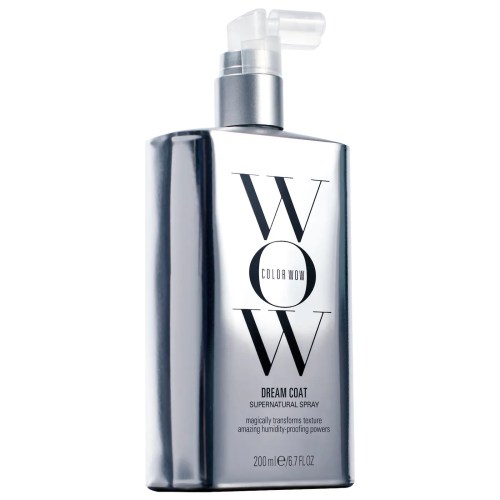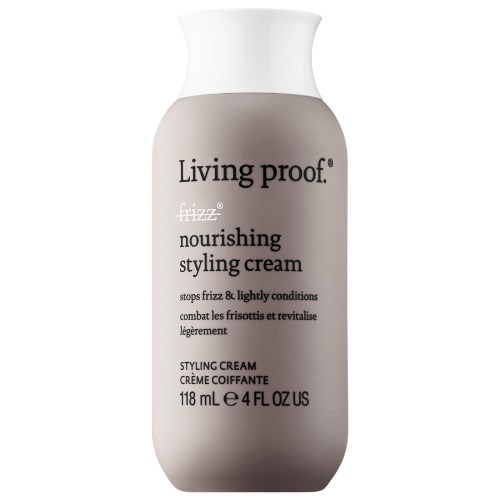‘I’m the Cosmetic Chemist Behind Two of the Most Beloved Frizz-Fighting Products on the Market, and This Is What Everyone Gets Wrong About Frizz Care’
According to a hair expert and chemist who worked on John Frieda's Frizz Ease, there are three different types of frizz.

When cosmetic chemist Joseph Cincotta, PhD, worked at John Frieda in the ’90s, he helped create the hair-care brand’s iconic Frizz Ease line. Now, he serves as the chief chemist at Colorwow, the brand behind the fan-favorite Dream Coat Anti-Frizz Treatment. Through his work in product development, he learned everything there is to know about frizz, and says there’s one big thing you people get wrong when it comes to managing it correctly. Apparently, there are three different types of frizz, and they all require their own unique type of smoothing treatment.
Experts in This Article
cosmetic chemist and the vice president of research and development at Frederici Brands
“Frizz is a misalignment of hair fibers. When hair fibers are aligned properly, you won’t see any frizz. When hair fibers separate and go in different directions or misalign with each other, that’s what frizz is,” says Dr. Cincotta. “Some people get frizzy hair when they go in high humidity. Some people get frizzy hair in low humidity. Some people get frizzy hair because they have a lot of damage.”
Not all anti-frizz products work the same way, and if you’re using the wrong formula for your particular frizz type, you aren’t going to get the results you want. Below, Dr. Cincotta breaks down the science so you can use the best products for your frizz.
The 3 types of frizz and how to manage each one
1. Frizz from high humidity
“High humidity causes the hair to revert, especially curly hair,” says Dr. Cincotta. “You blow dry it nice and straight, walk out on a humid day, boom, it just blows up. When you straighten your hair, you’re dehydrating it and aligning the hydrogen bonds within the hair… when you step into humidity or get water on your hair, it goes in the hair it breaks all those hydrogen bonds, which causes your hair to revert back to its natural shape,” he says.
If this sounds familiar, you need to use moisturizing products so your hair isn’t so dry that it sucks up all the moisture from contact with humid air.
“People who suffer from high-humidity frizz should use a moisture barrier,” says Dr. Cincotta. “They should apply products that create a moisture barrier between the air and their hair because moisture is what’s causing their frizz.”

Color Wow Dream Coat Supernatural Spray Anti-Frizz Treatment — $12.00 to $28.00
Dr. Cincotta loves this spray from Color Wow, where he serves as the brand’s chief chemist. “It’s not silicon—it’s a water-based product that you spray it on your hair,” he says. “It forms that moisture barrier on your hair” that keeps humidity out.
2. Frizz from low humidity
“We know how high humidity affects effects frizz, but if you live in a place like Arizona, where there’s five or 10 percent humidity, what happens is you get a lot of static charge on your hair—especially if you don’t brush it,” says Dr. Cincotta. “When you’re brushing and the hair is very dry because of low humidity, you get these electrons moving back and forth from brush to the hair to the brush.”
This movement of electrons creates an electrostatic charge, and the hairs all take on the same charge (either positive or negative) and begin to repel each other—thus resulting in frizz.
To fix this, you need to neutralize the static charge with a conditioner. Conditioners are “positively charged molecules that stay on the surface of your hair and neutralize any negative charge,” he says. “Make sure you’re using a good conditioner or a mask that’ll neutralize any static charge.”

Living Proof No Frizz Nourishing Styling Cream — $16.00 to $38.00
Condition away static-y frizz with this cream from Living Proof. Designed for medium-to-thick hair, this lightweight cream combats frizz by conditioning and smoothing the hair while also blocking humidity.
3. Frizz from damage
The last type of frizz is frizz which happens when you have broken, damaged hair that won’t lay like the rest of your strands.
“Because of the treatments people do or the amount of heat they use, they break a lot of hair,” says Dr. Cincotta. “Think about it: If you have shoulder-length hair, but you have a lot of broken hairs that are only half of the length or have split ends, those will appear like a halo on the surface of your hair because they’ll stick out”
Your best bet? Get a trim. “When your hair splits at the end. it’s because you’ve abraded the cuticle, which is the surface of the hair, and the middle of the hair, known as the cortex,” he says. “The only thing you could do for that is to permanently cut it off.”
And when you’re between salon visits, it’s imperative to prevent future damage so the frizz doesn’t get worse. “You’ve got to be careful,” says Dr. Cincotta. “Make sure you use a detangler and are regularly conditioning and lubricating the surface so you don’t break the hair and you don’t split it at the ends.”

Briogeo Don't Despair, Repair! Deep Conditioning Hair Mask — $15.00 to $124.00
Nurse damaged hair back to life with this deep conditioning mask from Briogeo. Use it weekly to strengthen damaged hair and help prevent future damage.
Want to be the first to hear about the latest (and greatest) SHOP product drops, custom collections, discounts, and more? Sign up to have the intel delivered straight to your inbox.
Sign up for the Well+Good SHOP Newsletter
Get exclusive deals on wellness, beauty, fitness, and food products that have been hand-picked by our editors.
Got it, you've been added to our email list.










